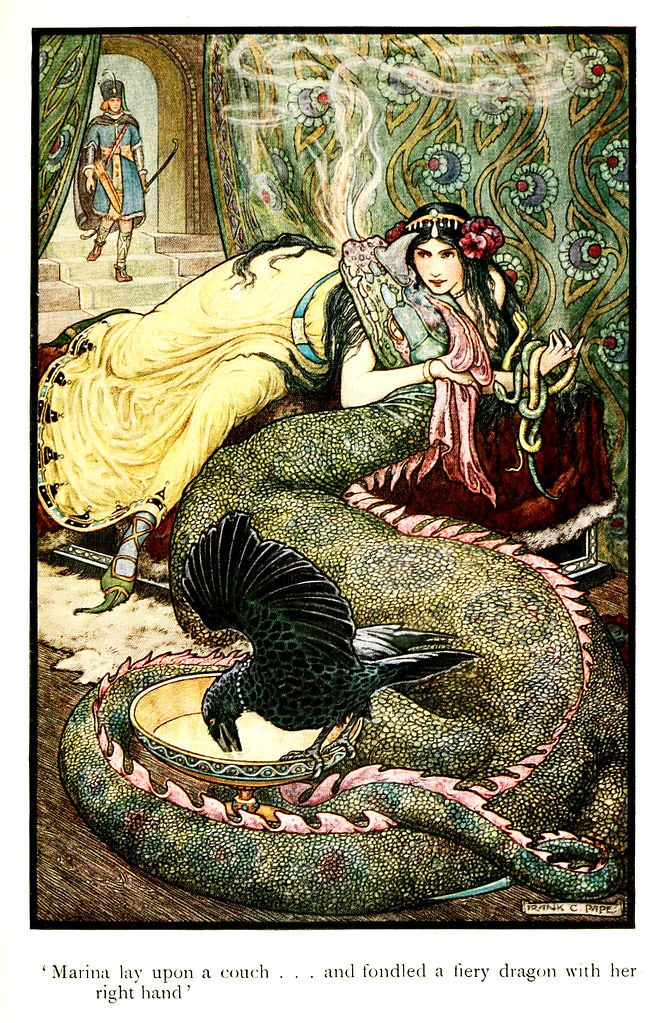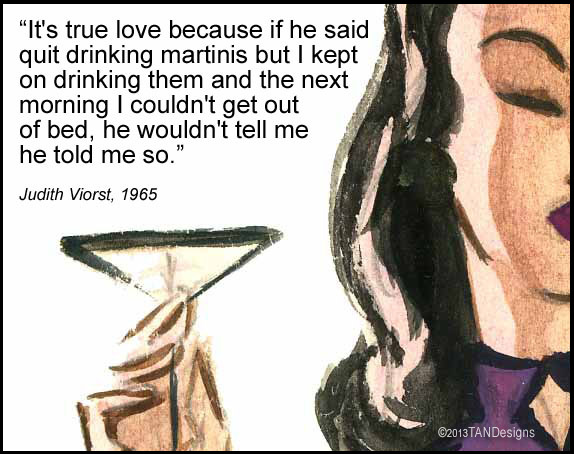Breasts are an important feature among mammals. They allow mothers to nurture their young through protracted infancies. No infancy is longer than that of the human species, especially that of the American male, which often lasts until death.
Breasts are more than just moving diner for the young, however. On humans at least, they also have valuable recreational value. Nothing else has the nutrition, entertainment, and sheer jiggle value of the human breast (although Jell-O™ does come close).
Naturally, men couldn't leave anything with the power, appeal, and nutritive value of breasts in the hands of women, literally or metaphorically. From the very dawn of human history, therefore, breasts have been in men's hands.
In 2500 BC, the Minoan women of Crete were believed to have worn a special garment that lifted their breasts entirely out of their clothing. (Like another popular story of ancient Minos, this is believed to be half bull.) By the rise of the Hellenic (Greek) and Roman (Roman) civilizations, however, women were wearing tightly bound breast bands to reduce their busts. This style persisted until 476 AD, rightly referred to by historians as the Fall of Rome.
As history progressed, the popularity of breasts rose and fell, heaved and plunged, lifted and separated. Each new culture found a new way of exalting or obscuring the breast, according to their inclinations. By the nineteenth century in Europe, breasts were being pressed together and thrust upward by means of whalebone-fortified corsets.
The strain was unbearable. Something had to give.
On May 30, 1889, the world’s first bra was invented. To tell you the truth, I’ve lost all track of where I found that date but I do know, however, that corset maker Herminie Cadolle invented the Bien-être in 1889, and that this “health aid” was the first garment to support breasts from the shoulder down instead of squeezing them up from below.
Marie Tucek patented the first “breast supporter” in 1893 (separate pockets for the breasts, with straps that went over the shoulder and were fastened by hook-and-eye closures). Yes, the first documented over the over the shoulder boulder holder.
New York socialite Mary Jacob Phelps invented a modern bra in 1914 (with two handkerchiefs, some ribbon, and a bit of cord) to accommodate a sheer evening gown. Ms. Phelps sold her invention, which she called the brassiere, to the Warner Brothers Corset Company in Bridgeport, Connecticut, for $1500 in 1914.
The US War Industries Board encouraged the assimilation of the bra in 1917 by encouraging women to stop buying corsets, thereby freeing up nearly 60 million pounds of the metal used in them.
During the 1920s, a Russian immigrant by the name of Ida Rosenthal founded Maidenform with her husband William. The Rosenthals grouped breasts into cup sizes and developed bras for women of every age.
So it doesn’t really matter what happened on May 30, 1889. It only matters that I’ve gotten you to read the word breast about twenty times in the last several paragraphs.
And so it goes
Dr. Caligari's cabinet is now so crammed that he had to stow stuff in the Cupboard. Time may wound all heels but once in a while you need a cup of tea.
Thursday, May 30, 2013
Wednesday, May 29, 2013
They Want Your Blood ... Now!
Director Scott Bateman's 2009 animated feature film (using the badly dubbed audio track from 1963 film Atomic Age Vampire. )
Just watch it - think What's Up Tiger Lily and an MST 3000 episode
Tuesday, May 28, 2013
Monday, May 27, 2013
Sunday, May 26, 2013
Saturday, May 25, 2013
Friday, May 24, 2013
Another small step
The roughly 1,400 voting members of the Boy Scouts of America’s (BSA) National Council voted 61-38 percent Thursday to end the ban on gay youth participating in the program, but reaffirmed their policy of mandatory discrimination against LGBT leaders and volunteers.
So you can have young men, manly young men, with strong feelings about other young men, manly young men without proper adult supervision around water soluble lubricants.
Who will judge if they have earned their sodomy badges?
Thursday, May 23, 2013
Sometimes, If God calls ... Don't answer!
The French, they are a strange race.
A little french shepherdess goes out into a field for a picnic. And instead of getting food poisoning, which was common, hears the voice of God, which is not.
Joan, heeding God's command, heads the army of France to rout the England and help crown a new French King. And for her troubles, Joan of Arc captured by Burgundians today at Compiegne, who sell her to the British. The British, known for their sense of humor, give Joan the ultimate hot foot.
This is what comes from being the messenger of God.
A little french shepherdess goes out into a field for a picnic. And instead of getting food poisoning, which was common, hears the voice of God, which is not.
Joan, heeding God's command, heads the army of France to rout the England and help crown a new French King. And for her troubles, Joan of Arc captured by Burgundians today at Compiegne, who sell her to the British. The British, known for their sense of humor, give Joan the ultimate hot foot.
This is what comes from being the messenger of God.
Wednesday, May 22, 2013
Tuesday, May 21, 2013
Monday, May 20, 2013
Sunday, May 19, 2013
Saturday, May 18, 2013
Friday, May 17, 2013
Thursday, May 16, 2013
Wednesday, May 15, 2013
Tuesday, May 14, 2013
Sunday, May 12, 2013
To one of everyone's favorite parents
May 12, 2012 -
Hope your Mother's Day is more pleasant than labor was.
The United States celebrates Mother's Day on the second Sunday in May. In the United States, Mother's Day was loosely inspired by the British version of the day and was imported by social activist Julia Ward Howe after the American Civil War. However, it was intended as a call to unite women against war. In 1870, she wrote the Mother's Day Proclamation as a call for peace and disarmament. Howe failed in her attempt to get formal recognition of a Mother's Day for Peace. Her idea was influenced by Ann Jarvis, a young Appalachian homemaker who, starting in 1858, had attempted to improve sanitation through what she called Mothers' Work Days. She organized women throughout the Civil War to work for better sanitary conditions for both sides, and in 1868 she began work to reconcile Union and Confederate neighbors.
When Jarvis died in 1907, her daughter, named Anna Jarvis, started the crusade to found a memorial day for women. The first such Mother's Day was celebrated in Grafton, West Virginia, on May 10, 1908, in the church where the elder Ann Jarvis had taught Sunday School. Originally the Andrews Methodist Episcopal Church, this building is now the International Mother's Day Shrine (a National Historic Landmark). From there, the custom caught on — spreading eventually to 45 states. The holiday was declared officially by some states beginning in 1912. In 1914, President Woodrow Wilson declared the first national Mother's Day, as a day for American citizens to show the flag in honor of those mothers whose sons had died in war.
Nine years after the first official Mother's Day, commercialization of the U.S. holiday became so rampant that Anna Jarvis herself became a major opponent of what the holiday had become. Mother's Day continues to this day to be one of the most commercially successful U.S. occasions. According to the National Restaurant Association, Mother's Day is now the most popular day of the year to dine out at a restaurant in the United States.
So Happy Mother's Day to all you moms
Hope your Mother's Day is more pleasant than labor was.
The United States celebrates Mother's Day on the second Sunday in May. In the United States, Mother's Day was loosely inspired by the British version of the day and was imported by social activist Julia Ward Howe after the American Civil War. However, it was intended as a call to unite women against war. In 1870, she wrote the Mother's Day Proclamation as a call for peace and disarmament. Howe failed in her attempt to get formal recognition of a Mother's Day for Peace. Her idea was influenced by Ann Jarvis, a young Appalachian homemaker who, starting in 1858, had attempted to improve sanitation through what she called Mothers' Work Days. She organized women throughout the Civil War to work for better sanitary conditions for both sides, and in 1868 she began work to reconcile Union and Confederate neighbors.
When Jarvis died in 1907, her daughter, named Anna Jarvis, started the crusade to found a memorial day for women. The first such Mother's Day was celebrated in Grafton, West Virginia, on May 10, 1908, in the church where the elder Ann Jarvis had taught Sunday School. Originally the Andrews Methodist Episcopal Church, this building is now the International Mother's Day Shrine (a National Historic Landmark). From there, the custom caught on — spreading eventually to 45 states. The holiday was declared officially by some states beginning in 1912. In 1914, President Woodrow Wilson declared the first national Mother's Day, as a day for American citizens to show the flag in honor of those mothers whose sons had died in war.
Nine years after the first official Mother's Day, commercialization of the U.S. holiday became so rampant that Anna Jarvis herself became a major opponent of what the holiday had become. Mother's Day continues to this day to be one of the most commercially successful U.S. occasions. According to the National Restaurant Association, Mother's Day is now the most popular day of the year to dine out at a restaurant in the United States.
So Happy Mother's Day to all you moms
Friday, May 10, 2013
Tuesday, May 7, 2013
Saturday, May 4, 2013
Friday, May 3, 2013
Wednesday, May 1, 2013
It's almost swimwear time
You may not have known it, but in the United States May is National Salad Month. By an astonishing coincidence, the second full week of May is National Herb Week. It's a time to celebrate the verdure of the earth with verdure on a plate. Or in a bowl—salad is just that versatile!
Salad has a long and noble history. The word itself comes from the Latin herba salta, which sounds like urban assault but actually means salted herbs. They called their salads salted herbs because that's what they were: bits of leafy herbs dressed with salty oils.
The Romans weren't the first people to enjoy salad. Though it's hard to imagine, people were eating herbs and vegetables long before the invention of salad forks. Many of our evolutionary forebears ate leaves and veggies right off the plants, vines, and trees on which they grew. In fact, scientists believe our ancient grazing tendencies may explain the popularity of salad bars and our willingness to overlook the inadequacy of most sneeze guards.
The salad was not perfected, however, until the develop of Bac-O Bits®, a genetically altered bacon substitute whose artificial bacon flavor and resistance to radiation have made it a staple of American salads, to say nothing of its cult popularity as driveway gravel.
According to the Association for Dressings and Sauces, the altruistic sponsors of National Salad Month, salad dressings and sauces have a history as rich and varied as salad itself. The Chinese have been using soy sauce for over five thousand years, the Babylonians used oil and vinegar, and Worcestershire was popular in Caesar's day. (Ironically, however, the Caesar salad was not invented by Julius Caesar. It wasn't even invented by Sid Caesar. It was invented by Caesar Cardini, a Mexican restauranteur, in 1924.)
The Egyptians favored oil and vinegar mixed with Oriental spices. Mayonnaise was invented by the Duke de Richelieu in 1756 after defeating the British at Port Mahon on Majorca (hence "Mahonnaise," later corrected to mayonnaise). The Duke was best known not for his military victories, however, but his all-nude dinner parties. I'm not going to speculate as to how a bunch of naked people got the idea of covering their salads in a creamy sauce.
In 1896, Joe Marzetti of Columbus, Ohio, opened a restaurant and served his customers a variety of dressings developed from old country recipes. His restaurant might have done better if he had served them actual meals, but his dressings became so popular that he started to bottle and sell them.
It was the birth of a market niche.
Half a century later, in 1950, Americans bought 6.3 million gallons of salad dressing. In 1997, they bought more than 60 million gallons. (This information is indisputable, because it appears on the Association of Dressings and Sauces' website.)
Since the United States had a population of about 260 million in 1997, it looks like the average American buys about 4.3 gallons of salad dressing each year. That's enough to drip a tablespoon per mile from New York to Chicago. I myself don't buy salad dressing, which means that some poor bastard has to buy 8.6 gallons each year to make up the difference. But it all comes out in the wash: I'm probably drinking his gin.
It's informative to note, however, that the Association of Dressings and Sauces measures salad dressing sold, not consumed. We've all seen salad dressing in the final stages of decomposition, the once creamy sauce crusting around the edges and congealing in the bottom of the bottle. Added up nationwide, that's got to be a few million gallons a year.
So it's not like we're pigs or anything.
Subscribe to:
Posts (Atom)































